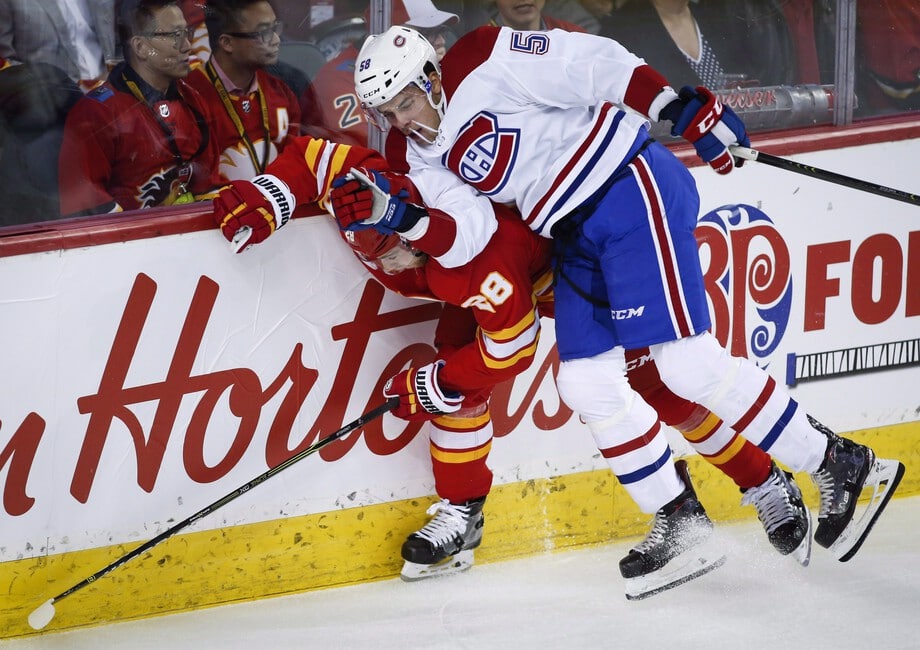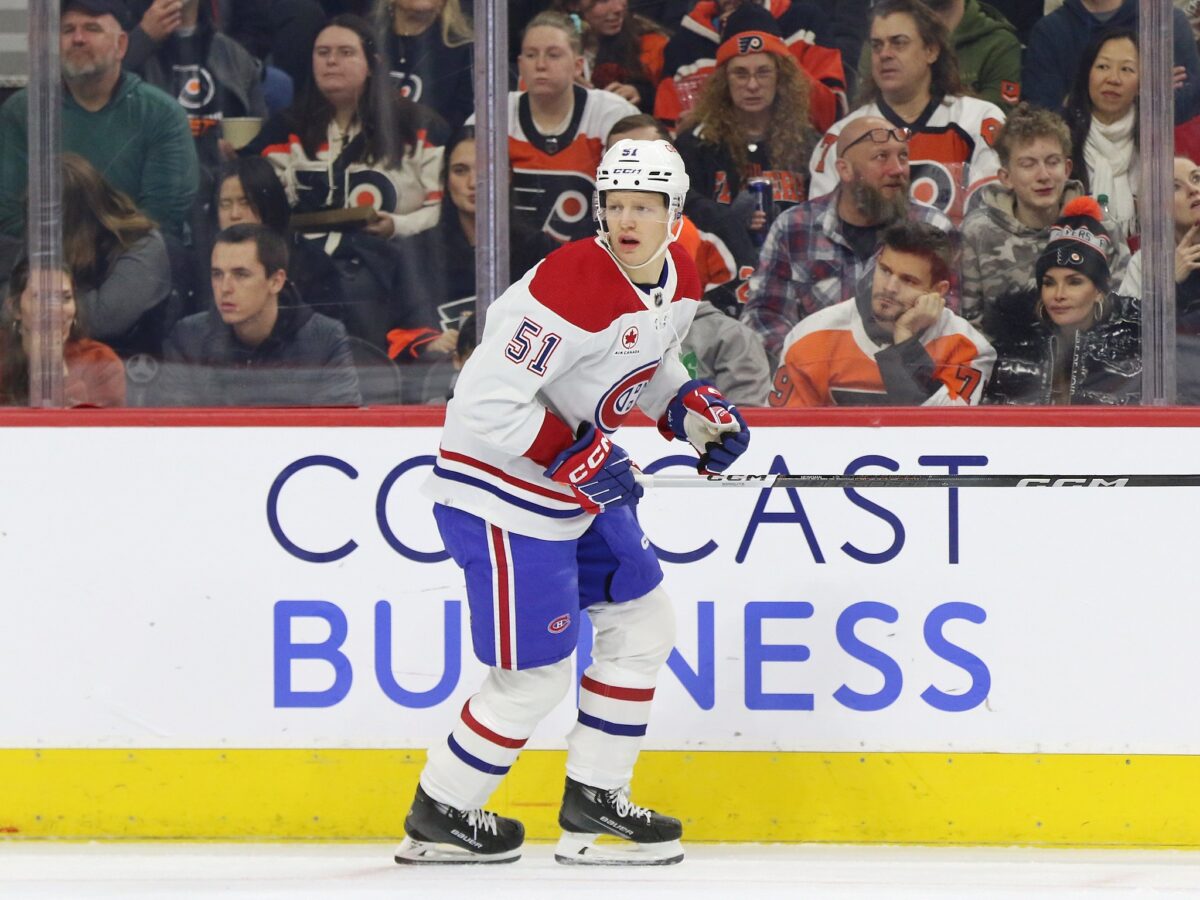For fans of the Montreal Canadiens, the offseasons are long and full of boredom. This gives many of them a need to fill their summer with more hockey talk, and without any signings or trades to discuss, they need to find other outlets. In this case, they chose to look back at the Canadiens’ 2015 prospect pool top 10 list.
The inevitable comparison of the 2015 and the current 2024 pools began. Bringing with it questions like, what happened to the 2015 class? Is 2024 really that much better? What’s the difference between the two, and why would the current crop of prospects have a better opportunity to become NHL players?
Canadiens 2015 Prospect List
The list shared by Habs on Reddit lists the top 10 of the 2015 prospects. Fans were excited for Nikita Scherbak’s arrival, or Jarred Tinordi to crush a forward on the boards. Many were looking forward to Zach Fucale, who was the winningest goaltender in the history of the Quebec Maritime Junior Hockey League (QMJHL) at that time, to step into the Canadiens crease.
Related: Canadiens Enter Next Stage of Rebuild
Only Noah Juulsen, Micheal McCarron and Tinordi had any significant time on an NHL roster, the remainder were either unable to develop or had medical issues that kept them from achieving their potential. Also, just because someone wasn’t listed in a top 10 list, doesn’t mean they won’t make it. Artturi Lehkonen wasn’t even on this list, even though he’s had the best NHL career so far of any of these players.
Canadiens Prospect Class Comparison
This is not a defense of the picks made by former general manager (GM) Marc Bergevin, but their draft position doesn’t even come close to that of the current prospect pool. The highest-drafted member of the 2015 list was Tinordi, selected at 22nd overall, and it was only that high because Bergevin traded up to select the hulking defender. That marked the only time Bergevin traded up in the first round over his 10-year tenure.

Draft position is one of the two major reasons why that 2015 list wasn’t able to provide the Canadiens with the necessary skill injection any team needs to get from its prospects. Looking at the rest of the teams in the NHL’s prospect pools with players selected in the ranges seen from Montreal’s list above, the outcomes seen are normal. The majority of players drafted in that range haven’t become NHL regulars, and many are no longer with the teams that drafted them. Compare the 2015 list with Montreal’s top picks over the last few draft classes; Sherback versus Cole Caufield, Tinordi versus Kaiden Guhle, Juulsen versus David Reinbacher, McCarron versus Ivan Demidov. Earlier draft positioning makes a big difference. The other reason is player development.
Caandiens Development Evolution
Player development is as much an art form as it is a science and every management group has its own process and philosophy. Positive outcomes come down to two factors, the player’s buy-in and a consistent message from the NHL team’s development group. In 2015, the same development approach was used for every player; play one year in Europe, junior hockey or NCAA, then make the jump into the professional ranks. It was a cookie-cutter approach that made no accommodations for a player’s individual needs or issues before putting them into the professional leagues. Are they smaller or larger, are they in need of more development in their skills like skating or shooting? Bergevin had some development coaches, but none were specialists and they weren’t supported with analytics. Now, specialty coaches and more are seen under Kent Hughes.
The current management group has invested heavily in player development plans. The organization is not only heavily invested in the development of its players playing junior or NCAA, but also its American Hockey League (AHL) affiliate players as well. They have access to all of the same development coaches as the Canadiens’ skaters do. This development approach is starting to pay dividends at the lower levels now as well as some prospects, such as Emil Heineman have seen improvement over the season. Some of the youngsters have seen NHL action, and others may not return to the AHL next season.

Management seems to agree with that assessment as they hired more people in the scouting department. To help in their draft decision-making process, Hughes is not afraid to bring in help from outside either as in 2022, he hired an independent scouting group named Team 33. Adding an outside opinion is one way of supporting their staff and adding another perspective. The continued additions to the analytics staff have had far-reaching effects as well, as their information has been used as an essential tool for both scouting and building individual development plans for the coaching staff to implement.
The Canadiens’ current development plans are individualized and during the rebuild thus far, the focus has been on individual improvements and not on team standings. The best example of the individualized approach may just be former first overall selection Juraj Slafkovsky. There were many calls for the young Slovak to be sent down to the AHL. Instead, head coach Martin St. Louis kept him up with the Canadiens so that he could work on his game directly. Judging by the major improvement last season compared to his rookie season, it looks like that was the right decision, one that led directly to the club committing to the player for another eight years.
Contrast that with the approach taken with the top pick for Montreal in 2023, David Reinbacher. Instead of keeping the young defenceman in Montreal, they sent him back to Kloten of the Swiss League. He then came to North America and ended the season with Laval in the AHL. He has an opportunity to make the leap to the NHL, and would have the added support from Slafkovsky, who has already dealt with the pressures of playing in this demanding market.
In the end, comparing the two draft classes is less about proving one group is better than the other, it is more used as examples to highlight the differences in the draft-and-develop plans of the two regimes. A contrast of the old school versus the new school. Whether it’s the NHL of the past, or the modern NHL, the key to any rebuild or retool plan is the development of the prospects. No matter how well a team drafts, it is wasted if there is not an achievable development plan implemented. And because players are not all built the same, having an individualized approach is the only way ahead in the modern NHL. It’s a process that involves patience to build the best possible future for the franchise.
